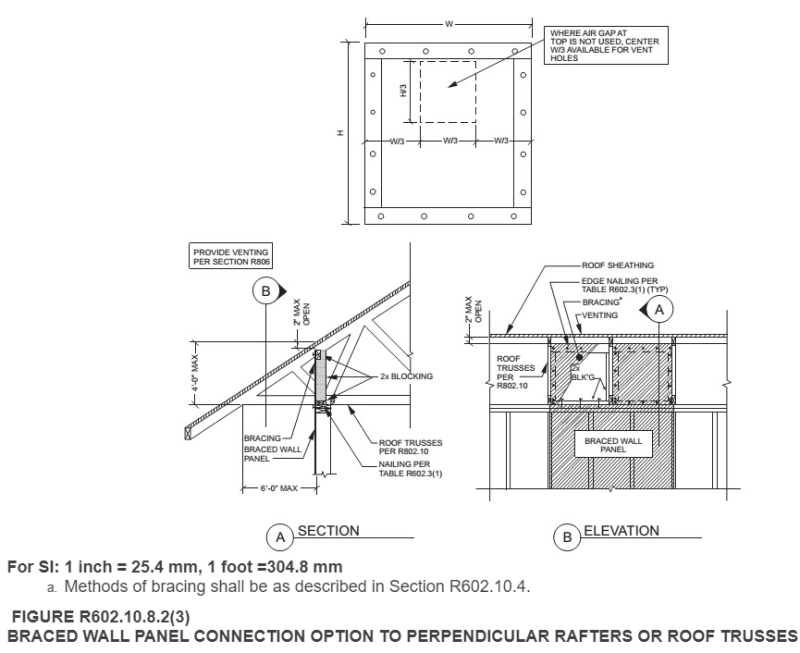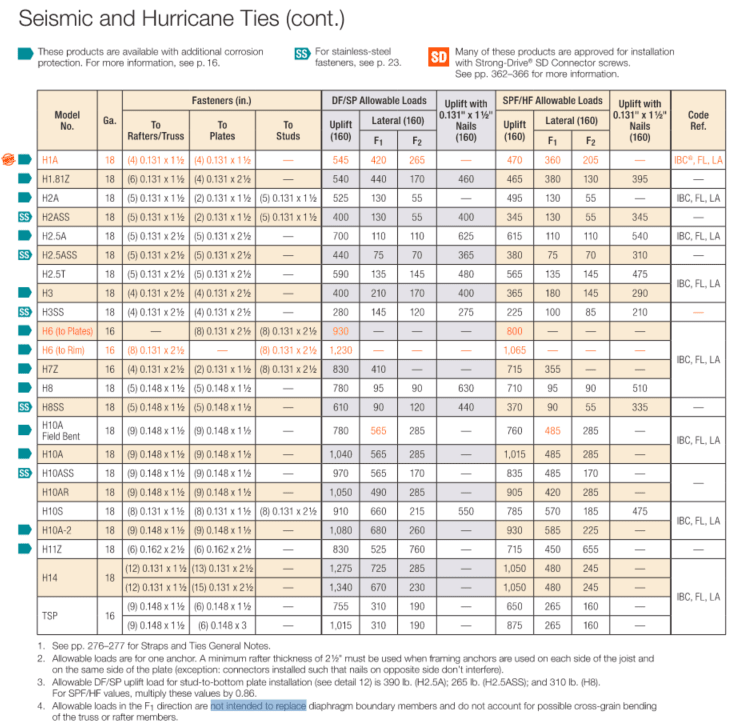Why does the 2021 IRC not address diaphragm continuity (Diaphragm boundary to blocking to top plate) through detailing? It is inferred in the definition of diaphragm (see below), but not shown in any figures or prescriptive outline.
We constantly run into the issue of contractors not wanting to provide full height blocking above the top plate because "that's not the way we do it" or "that doesn't provide adequate ventilation". The SBCA has issued technical papers addressing bird blocking to help maintain load path while providing ventilation. I get it, people don't want to do the extra work.
It's unfortunate that a prudent engineer becomes the less popular engineer because the firm down the street is willing to ignore Code requirements. However, the issue I'm seeing is that our Codes don't provide much effort in showing that it's a requirement to begin with.
When the IBC/IRC provides the following figure, this only validates the contractors argument that diaphragms don't need to be attached to full height perimeter blocking. However, these details are typically provided to either confirm the braced wall panel attachment, or the method to keep a truss vertically plumb. THESE DETAILS DO NOT PERTAIN to diaphragm continuity.
I understand load path, and understand the Code's requirements, but why has this not been addressed yet. Or maybe it is and I'm just looking in the wrong place.
And I know some good engineers who argue that lateral loads travel through the truss chord & connection to the top plate. Or that partial height blocking of the truss is "good enough for low lateral loads". Or that "portal frames" are established between the truss chord and roof diaphragm. Where I practice, we have to rely on the full perimeter/boundary of the roof diaphragm for load transfer.


We constantly run into the issue of contractors not wanting to provide full height blocking above the top plate because "that's not the way we do it" or "that doesn't provide adequate ventilation". The SBCA has issued technical papers addressing bird blocking to help maintain load path while providing ventilation. I get it, people don't want to do the extra work.
It's unfortunate that a prudent engineer becomes the less popular engineer because the firm down the street is willing to ignore Code requirements. However, the issue I'm seeing is that our Codes don't provide much effort in showing that it's a requirement to begin with.
When the IBC/IRC provides the following figure, this only validates the contractors argument that diaphragms don't need to be attached to full height perimeter blocking. However, these details are typically provided to either confirm the braced wall panel attachment, or the method to keep a truss vertically plumb. THESE DETAILS DO NOT PERTAIN to diaphragm continuity.
I understand load path, and understand the Code's requirements, but why has this not been addressed yet. Or maybe it is and I'm just looking in the wrong place.
And I know some good engineers who argue that lateral loads travel through the truss chord & connection to the top plate. Or that partial height blocking of the truss is "good enough for low lateral loads". Or that "portal frames" are established between the truss chord and roof diaphragm. Where I practice, we have to rely on the full perimeter/boundary of the roof diaphragm for load transfer.




